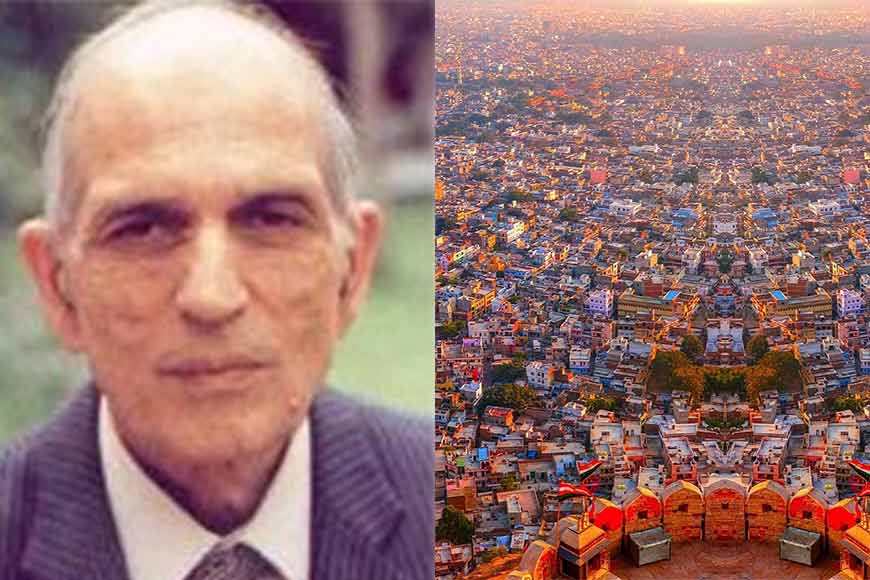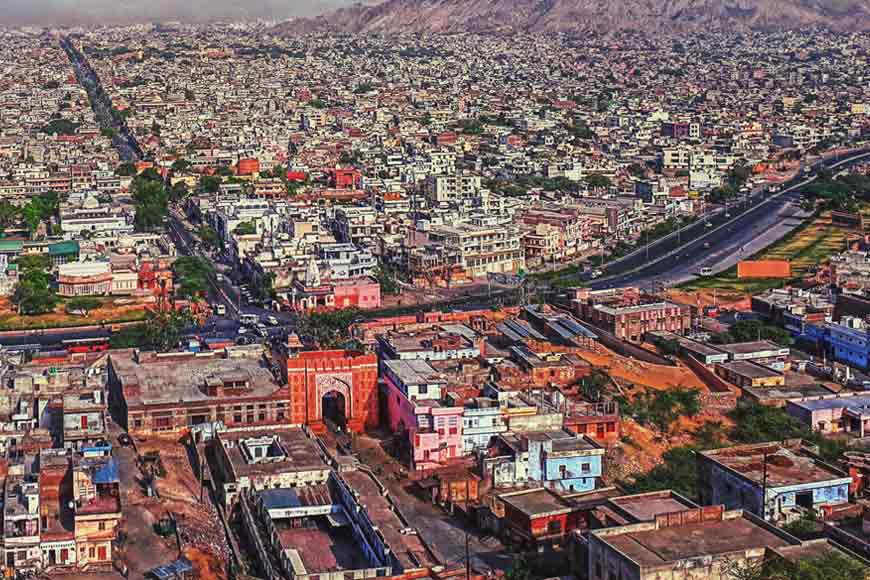Bengali architect Vidyadhar Bhattacharya who built Jaipur, India’s first planned city

The majestic capital of Rajasthan, Jaipur, is the gateway to India’s most flamboyant state. The historical city’s colourful, chaotic streets ebb and flow with a heady brew of old and new. Swanky four wheelers and packed buses dodge dawdling camels, leisurely cycle-rickshaws frustrate stream of motorbikes, and everywhere buzzing autorickshaws watch for easy prey. In the middle of this cacophony and mayhem, the splendours of Jaipur’s majestic past are islands of relative calm that evoke a different pace and another world.
At the city’s heart, a pleasant hue of pink adorns monuments and magnificent palaces. The regal beauty of the City Palace that continues to house the former royal family, the Jantar Mantar, the royal observatory, maintains a heavenly aspect and the honeycomb Hawa Mahal gazes on the bazaar below. And beyond the city’s boundary, in the arid hills surrounding the city is the fairy-tale grandeur of Amber Fort, Jaipur’s star attraction.
While travelling in Jaipur, one gets a sense of modernity and planning amid the chaos and cacophony that reigns supreme and that is because the state capital is the first planned city of the country, established over 290 years ago! Just 280 km from Delhi, Jaipur boasts itself with a design that was outlined with fine detail. The entire credit for this goes to Maharaja Sawai Jai Singh II and an obscure Bengali architect from Naihati, Vidyadhar Bhattacharya ((1693-1751).
 The Pink City
The Pink City
Back in 1700, Amber (Amer), a city set in the midst of arid mountains, was the original capital city of the Kachwaha Rajput kings. However, owing to continuous famines, the then-King, Maharaja Sawai Jai Singh II, decided to shift his kingdom to greener pastures. He scouted for other potential cities in the kingdom to set up his new capital and finally zeroed in on a place 12 km away from Amber. With the Mughals in the North and the ever-expanding empire of the Marathas in the south of Rajasthan, Jai Singh needed a capital that would be strategically important. Set on a plain terrain and surrounded by mountains, the city of his choice was set to become an unconventional capital.
Maharaja Jai Singh II was an astronomer of high caliber. With his vast knowledge, Jai Singh II embarked on a journey to build a new capital city for his kingdom. He recruited architect Vidyadhar Bhattacharya who was already employed in his court and working as the Chief Auditor, to guide him in the process.
Bhattacharya was a brilliant architect. He used the holistic principles of Shilpa Shastra and Vaastu Shastra to create a grid-based model of the city. He researched on the ancient Indian literature on astronomy, the journals on Ptolemy and Euclid while planning the city. Finally, the two wise architects designed a blueprint for Jaipur around 1727, dividing the city into nine squares, each symbolizing the nine planets of the solar system. Two of these divisions were reserved for state buildings and palaces while the rest was reserved for the general public.
With his vast knowledge, Jai Singh II embarked on a journey to build a new capital city for his kingdom. Vidyadhar and Jai Singh II built 20-feet-high walls surrounding the capital with seven gates (two gates were added later) on all sides. One of these gates, which faces eastward, was called the Suraj Pol, the western gate getting the name, Chand Pol and the one facing the former capital city of Amber was called Zorawar Singh Pol.
The city was planned so meticulously and scientifically, that each street went east to west and north to south. There were covered porches in the markets that would protect the merchants from the sun in summers and cold winds in winter. According to UNESCO, the most outstanding feature of Jaipur remains its town plan that is said to be arrived at after a thorough analysis of several town plans sourced by Sawai Jai Singh II himself from across the globe. It was wonderfully executed by the Bengali architect.
With its excellent detailed planning, inspired by Jai Singh’s passion for astronomy, knowledge of mathematics and Bhattacharya’s experience in architecture, Jaipur became India’s first planned city, the majestic brilliance of which can still be seen today, about 300 years later!









